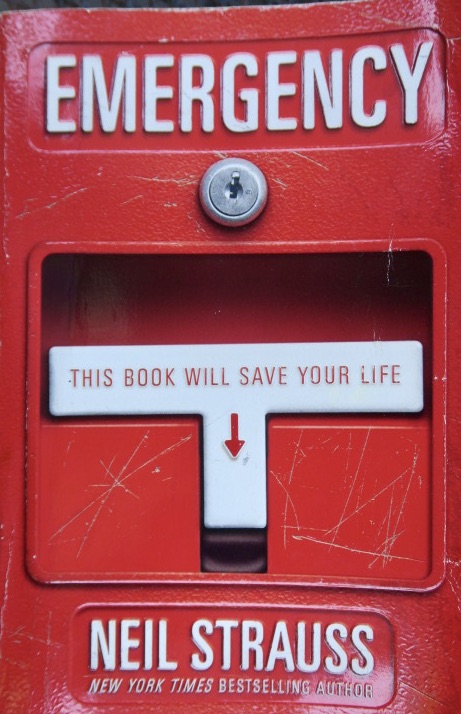Review of Neil Strauss’ EMERGENCY
By Christopher Nyerges
[Nyerges is an educator, and author of such books as “Urban Survival Guide,” “How to Survive Anywhere,” “Foraging California,” “Self-Sufficient Home,” and others. His website is www.SchoolofSelf-Reliance.com]
I recently gave a lecture based on the decline of western culture, referring to such books as Morris Berman’s book, “The Twilight of American Culture” and others. One of the other books I used to broaden the perspective was “Emergency.”
“Emergency” is by Neil Strauss, published in 2009. It’s a thick book, 418 pages long, where Strauss takes us along on his survival adventure. He’s a man who became very concerned that America was going to hell in a handbasket, and he didn’t want to go down with the ship. He shares the facts as he sees them, and he spends the beginning of the book describing how he can find safe haven elsewhere, out of the United Stated. He takes us on his journey of off-shore banking, multiple passports, the logistics of actually getting out if there was an impending crisis. This is a man who was convinced that the U.S. was the worst place to be in the world and he was trying whatever he could to find refuge elsewhere. That’s the 25 cent version anyway. And though all of his research was correct, he made a fascinating and eye-opening discovery in his world travels: Wherever he went, there were people working just as hard to get INTO the U.S., as he was working to get out. Everyone wanted to come here to the United States of America. It made Strass start to re-think his whole survival plan.
He decided to take another look at the United States, and see if perhaps he should set his sights closer to home.
Strauss takes us step by step in this journey, where he began to enroll in various sorts of survival classes here in the U.S., and describes his learning process. He didn’t know it at the time, but he was learning how to live with less, and how to live with very little in the forest, or his own backyard for that matter.
Among the many classes he describes joining and doing his best to master, included Tom Brown Jr.’s Tracker School where he learned to make fire, make a lean-to and sleep in it, cold and rain notwithstanding. Remember, this is not a how-to book, but an entertaining book where the author explains how pathetic he felt, how vulnerable he felt in the big mean world, but by taking classes and learning hands-on, he slowly became confident in his own abilities, and his likelihood of surviving a disaster.
We’re treated to a cast of characters who inhabit the “survival” world, such as firearms instructors, hard-core survivalists, the CERT training, and even me. Yes, among the many classes that Neil Strauss attended in his personal training program included the classes that I teach through the School of Self-Reliance. He described learning how to recognize wild foods, and how we created meals that we collected from the wild that day. He describes how he learned to make an archery bow from me, and how we made fire with the bow and drill. He even talks about how I eat poison oak to develop immunity – though I do not recommend it to others because our body chemistries are so different.
I barely remember Strauss at the many classes of mine he describes. He didn’t say much. In fact, I only learned about his book because a friend alerted me to the fact that I was described in it. I guess I felt good that I could make someone else feel confident, and feel good about living in the United States, decline or not.
Strauss talks about how he enrolled in the CERT (Citizen Emergency Response Team) program, which is a nation-wide program to get civilians trained and ready for emergencies. Strauss talks about the training, the gear that he learned to use, and how the training altered his state of mind regarding emergencies. “Before I would run away from a problem or disaster, and now I was running to it,” he explained.
Strauss also describes a self-imposed three-day survival experiment in his own home where he could use no refrigerator, no gas or electricity, and couldn’t use the flush toilet. Everything had to be from the food, water, and gear he stored, and this was no small feat considering he lived in a smallish urban home.
As I said, it’s not a how-to book, but it’s loaded with practical experiences that anyone can adapt and apply. You can find copies on Amazon.



